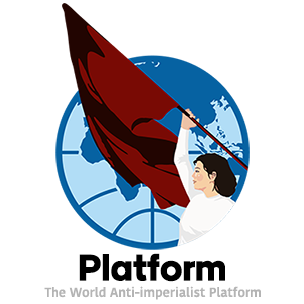On September 27, a delegation of the World Anti-imperialist Platform visited the illegal stamp museum in Tbilisi where the office of the Unified Communist Party of Georgia used to be and Gori at the birthplace house museum of Joseph Stalin. It was later used as the party headquarters of the United Communist Party of Georgia, but was closed in 2018 as anti-communist and anti-Soviet ideology intensified after the collapse of the Soviet Union. It is now operated as a museum by the United Communist Party of Georgia to preserve the traditions of the socialist revolution.
The United Communist Party of Georgia was founded in June 1994 when the Stalin Society, the Georgian Workers Communist Party, and the Union of Communists of Georgia merged.
Temur Pipia, General Secretary of the Unified Communist Party of Georgia, gave us a tour of the old printing house, which was built in 1902. Pipia explained that the printing house was where Stalin era conducted the illegal revolutionary activities with the Bolsheviks in Georgia.
In particular, Lado Ketskhoveli, the leader of the Bolsheviks in Georgia, worked as a manager in the party’s underground printing house, where he intensified mass agitation to lead the workers and actively organized strikes.
Despite the repression of 1905, members of the Georgian Bolshevik Party continued their propaganda work in underground printing houses. They published newspapers in Georgian, Russian, and Armenian. One of the headline of the newspapers, published in the International Workers’ Day (May Day), was “Long Live the Workers’ Regime.”
Pipia explained the history of Georgia after the collapse of the Soviet Union “as de-Sovietization proceeded in Eastern Europe, it was the place where neoliberal policies, especially those of US imperialism, were best realized in socialist countries.
Georgia has been increasingly fascistized since the Color Revolution of 2003. This is not unlike the Euromaidan coup in Ukraine in 2014. The Georgian regime intensified the fascist repression and transformed Georgia into a neoliberal society. Even under the fascist regime, the United Communist Party of Georgia continues its efforts to establish a workers’ and people’s government.
The delegation toured the former party office and explained the current fascist crackdown on progressive forces in “Republic of Korea”, including the People’s Democracy Party (PDP). The members of the Unified Communist Party of Georgia, including the general secretary, stood in solidarity with the slogans “Down with pro-US fascist warmonger Yoon-Suk Yeol!”, “Abolish the National Security Law!”, and “Stop fascist repression against the PDP!”.
On September 28, the delegation visited the Gori region, home to Stalin’s birthplace and the Joseph Stalin National Museum in Gori, Georgia.
The delegation held a meeting with members of the Gori Regional Committee of the United Communist Party of Georgia.
During the meeting, the party members explained the superiority of the social welfare system to the education, healthcare, and housing provided during the Soviet era and expressed their political stance, which continues to support Stalin’s principled line after the collapse of the Soviet Union in 1991.
The delegation explained the South Korean Yoon Suk-yeol government’s recent crackdown on progressive and reformist forces in “ROK”, including the People’s Democracy Party, and the fascistized reality of “ROK”. The members of the Gori Regional Committee said that the situation is similar in Georgia after the collapse of the Soviet Union, and raised slogans of “Down with fascist warmonger Yoon-Suk Yeol!”, “Abolish the National Security Law!”, and “Stop fascist repression against the PDP!”.
The delegation visited the Stalin Birthplace and the State Stalin Museum in Gori. In front of the museum, the train that Stalin rode was on display. The museum is the largest Stalin museum in Georgia and was built in 1951 in a Gothic style. Inside, there is a vast collection of historical documents chronicling Stalin’s childhood, youth, and activities as a communist leader. “At the time, Stalin refused to build the museum, but he had no choice but to build it in order to tell future generations about the revolutionary tradition,” said a museum staff member.
The museum displays items that Stalin actually used, including his office in Kremlin. Stalin’s body was originally laid to rest in Lenin’s mausoleum in Red Square, Moscow, but was moved to the Kremlin Wall Necropolis during Nikita Khrushchev. The rewriting of history continues today as the museum shows the downgrading of Stalin at the corner on the first floor.
Stalin, who inherited and developed Lenin’s revolutionary ideas, led the US and British imperialists to the anti-fascist front during World War II, gaining superiority in capabilities, isolating and destroying the fascist forces, and winning World War II. In the current situation of World War III, it is important to reflect on Stalin’s revolutionary life as the strengthening and expansion of the anti-imperialist front, which inherited the revolutionary essence of the anti-fascist front, is an important task.
On the anniversary of Stalin’s death, bouquets of love and respect are placed in front of the statue of Stalin in Georgia, and rallies and marches are held in the city center in his honor. Stalin’s revolutionary spirit is alive and well in the hearts of the people.



























